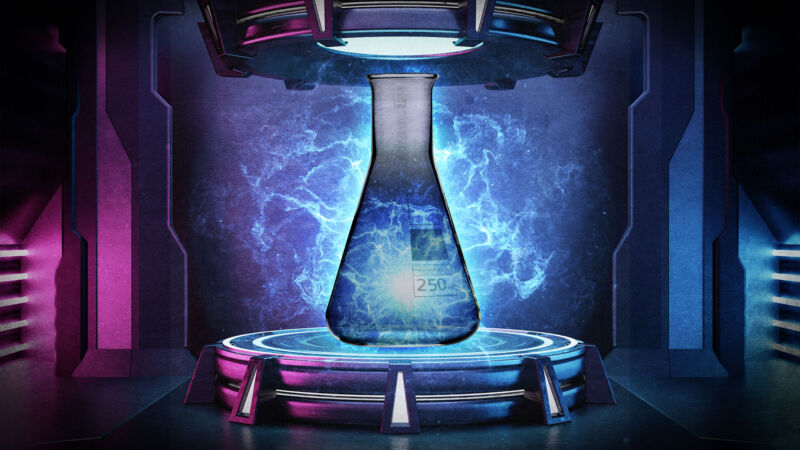
Aurich Lawson | Getty Images
Synthetic fuel promises to put gasoline back in our future. Motorsport will be using it in 2026, and European Union law is using it as a stay of execution for the combustion engine. Advertising promises that a future without fossil fuels doesn’t need to be one without gasoline. But burning petrochemicals, wherever they come from, is still burning petrochemicals, and synthetic fuels come at a cost their supporters aren’t talking about.
We live in perilous times. The annual Intergovernmental Panel on Climate Change report has become blunter with every edition. The sixth, published this March, described the steps we need to take to “secure a livable future.” Not a good future filled with an abundance of resources and biodiversity, just a survivable one. We’re in this situation because we’ve spent the better part of two centuries digging up fossil fuels and burning them, putting carbon and other greenhouse gases like methane into the atmosphere and causing significant global warming.
But even though there’s a domino effect to climate change—drought breeds drought as the land cooks and water seeps into the sea, for instance—mathematically, there is still time to act.
However, it’s become clear that we can’t be trusted to do the right thing. As the precipice we’re wobbling on gets thinner with every misstep, some solutions that may have been on the table 30 years ago aren’t great options for our current situation.
Synthetic fuel is one of those solutions.
What is synthetic fuel?
There are many types of fuel that carry the “sustainable” label, meaning they’re made from a smaller percentage of—or are entirely free from—fossil fuels. They range from things like reusing cooking oil as a diesel replacement to molecularly constructing and then refining methanol.
Synthetic fuels are the latter. In theory, the process is a high school class on organic chemistry: Hydrocarbons are strings of hydrogen and carbon, so you break them apart and put them back together until you have the right one.
The synthesis could be done with any old carbon and hydrogen you happen to have—you could even get them out of fossil fuels if you wanted to needlessly complicate refining crude oil or natural gas. The process of creating synthetic fuel doesn’t care where the carbon and hydrogen come from, and there’s no purity advantage to them being sustainably generated; it’s just the only justifiable way of doing it.
In theory, to make a synthetic fuel, you capture carbon from the air and generate hydrogen from electrolysis of water using clean and renewable electricity. You then jumble the carbon and hydrogen up and put them through a series of processes that ultimately lead to a drop-in gasoline.
When the fuel burns, it’s just petrol, and it will re-release the captured carbon into the atmosphere. But it won’t have taken any more out of the ground, which is why advocates for synthetic fuel refer to it as carbon-neutral.
It sounds too good to be true: carbon-neutral, guilt-free, renewable fuel for all our existing, beloved cars, planes, and ships. But the process of making synthetic fuel is real and possible.
We can (and in some places, already do) capture carbon from the air. We make hydrogen from electrolysis, though it accounts for just 4 percent of hydrogen generated worldwide. The Fischer-Tropsch process for turning methanol to gasoline exists, and there are catalysts and existing technologies that can make it happen.
Although the process is a very nerdy way of making gasoline, it’s not confined to a laboratory stage, and there are companies—more each year—making fuel this way. Porsche opened an enormous new facility in southern Chile at the end of 2022 and generated its first barrel of all-synthetic fuel; it plans to release nearly 11,000 more gallons in 2023.
Germany just pushed the European Union to give a stay of execution to new combustion engine cars in 2035. The condition is that these cars must run only on synthetic fuel (or its more online-sounding synonym, e-fuel). Of course, that may sound like a transparent play to influence emissions restrictions toward the interests of, at the least, the VW Group.
Formula 1 is moving to 100 percent synthetic fuels by 2026, with its feeder series Formula 2 and 3 already steadily increasing the percentage of sustainably sourced gasoline in their Aramco-supplied fuel. There’s no shortage of petrochemical companies that want to be part of the shift to gasoline that can wear a carbon-neutral badge.
There’s a “but,” though: synthetic fuel probably isn’t a workable solution.









